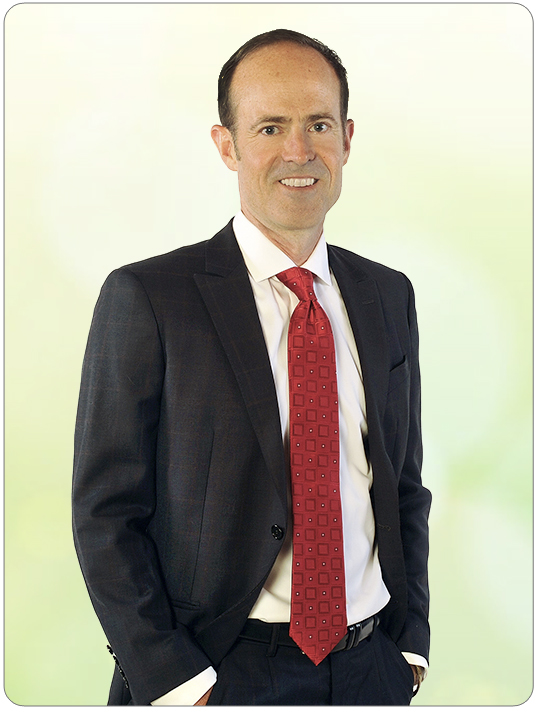
The ColoHealth Health & Wealth Newsletter
March 2024
Vol. 14, Issue 5
Paternalistic Medicine – And How To Escape It
Have you ever felt like you’re just going along with a doctor’s orders without really being part of the decision?
For example, you get to see your doctor for ten minutes… if that. They don’t take the time to listen. They don’t take the time to get to the bottom of what might be ailing you.
Instead, they whip out a prescription, or print out a stock, computer-generated, generic “treatment plan.”
But they don’t take the time to discuss it with you in detail and make sure you understand it.
Worse, they don’t take the time to make sure they understand you, as the patient!
Asking questions, or questioning the doctor in any way is discouraged.
That’s a phenomenon we call “paternalistic medicine.”
It happens when healthcare professionals make decisions for you, without much of your own input or considering what you personally value or prefer.
It’s like someone else steering the ship of your health without checking if you’re okay with the direction.
The underlying assumption behind paternalistic medicine is that the doctor always knows best. In this model, patients have little understanding of their own health, and should unquestioningly defer to the doctor’s expert judgment.
We’re treated like children… at best.
Hence the word “paternalism.”
In generations past, medical paternalism was actually standard practice: there was a vast knowledge gap between doctors and patients. And before the Internet, it was very difficult for patients to do any meaningful research on their own conditions themselves.
But now that nearly every patient has tremendous access to information that our great grandparents could only dream of, patients are no longer operating in the dark.
You can and should learn as much as you can about your condition, standard treatment options, and possible alternatives.
Is Medical Paternalism Still Common?
While a lot has changed for the better over the years, unfortunately, medical paternalism hasn’t completely disappeared.
In fact, under traditional insurance models that force too many primary care doctors into overworked, overcrowded, “take-a-number” clinics, the problem of paternalistic medicine is getting worse, not better.
It’s more pervasive in healthcare environments where there’s a significant imbalance in power or knowledge between patients and doctors, and where patients have little or no freedom to choose their own providers.
And it’s often influenced by long-standing traditions and cultural norms.
Are You Stuck in a Paternalistic Medicine Situation?
Here are some common signs of medical paternalism:
- Your doctor discourages you from asking questions, or does not give you the opportunity.
- You feel like you’re being directed rather than consulted.
- You’re treated more like a number than a valued patient and client.
- You are left not completely understanding your treatment plan or the possible alternatives.
- Your doctor doesn’t listen to feedback about your treatment plan, or disregards your concerns.
How To Escape Medical Paternalism
Here’s how you can avoid the “paternalistic medicine” trap and take back control of your healthcare.
- Educate Yourself. Knowledge is your greatest ally. The more you know about your health, the more empowered you are.
- Speak Up. Never hesitate to ask questions and seek clarity. Come prepared with questions. Write them down in advance.
- Make Your Preferences Known. Communicate your values and concerns openly with your healthcare provider.
- Bring an advocate with you to the appointment. Sometimes another person’s perspective can be valuable.
- Seek Alternative Opinions: If a proposed treatment doesn’t feel right, it’s absolutely okay to consult another doctor.
- Understand Your Rights. You have the ultimate say in your healthcare decisions. You should never feel ordered or coerced by any doctor (or government entity) to undergo any medical treatment.
- Speak with the hospital patient advocate or ombudsman. These individuals can help you work the system to ensure your rights and needs are being heard and respected.
- Escape narrow care networks. Many traditional insurance products restrict you to using only their own approved doctors, clinics, and hospitals. This reduces competition and consumer choice.
- Remember, the doctor works for you. They are your paid consultant and service provider. Kind of like if you hired a plumber, or an interior designer. They get to make recommendations, but you get to make the final decision.
Most health sharing plans let you choose your own doctor. And if you have assets in a health savings account, you can use them with any provider, in or out of your plan’s network.
This gives you more leverage and leeway to find a better doctor – such as an independent doctor.
Read More: Which Health Share Plans in Colorado Allow You to See Any Doctor
You are in charge. Nobody else.
In your journey through healthcare, remember that you hold the ultimate control over your body and decisions.
Yes, the doctor’s years of training and expertise is invaluable, and should carry a lot of weight.
But ultimately, your relationship with your doctor should be consultative and collaborative. Not dictatorial.
Open communication and mutual respect can go a long way towards helping you and your doctor understand each other. And vastly improve health outcomes.
If you’re seeking personalized advice, especially regarding life insurance, long-term care insurance, Medicare, or retirement planning, just reach out to your Personal Benefits Manager that sent you this email.
To Your Health and Wealth,

Wiley P. Long III
President- ColoHealth
The ColoHealth Health & Wealth Newsletter is published monthly and emailed to subscribers at no charge. Subscribe now to stay on top of the critical information you need to know about health insurance, healthshare plans and managing your finances to achieve financial security.
© 2023 | Legal Information


